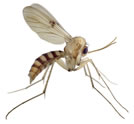05 October 2011
Finding The Fly Tree of Life - The Poster!
This public-friendly poster is part of the outreach component of the FLYTREE project, and is meant to help publicize the project and fly diversity in general. Feel free to print, distribute, or advertise. Thanks to all who gave permission to use their images, especially Tom Murray and others at www.bugguide.net.
14 March 2011
Map of the Fly Tree of Life Published!
Wiegmann, B.M., Trautwein, M.D., Winkler, I.S., Barr, N.B., Kim, J.-W., Lambkin, C., Bertone, M.A., Cassel, B.K., Bayless, K.M., Heimberg, A.M., Wheeler, B.M., Peterson, K.J., Pape, T., Sinclair, B.J., Skevington, J.H., Blagoderov, V., Caravas, J., Kutty, S.N., Schmidt-Ott, U., Kampmeier, G.E., Thompson, F.C., Grimaldi, D.A., Beckenbach, A.T., Courtney, G.W., Friedrich, M., Meier, R., and Yeates, D.K. 2011. Episodic radiations in the fly tree of life.
Congratulations!!
08 December 2010
Rediscovering World's Rarest Fly
28 June 2010
The Eyes have it!
14 May 2010
Drain flies spark a lumper/splitter debate
10 April 2010
Dr. Art Borkent, biting midge expert, featured
09 October 2009
In the Year of Darwin, Darwin Core Standard Ratified!
The TDWG Executive Committee announces the official ratification of Darwin
Core (http://rs.tdwg.org/dwc/index.htm) as a TDWG standard.
Darwin Core joins four other TDWG standards- http://www.tdwg.org/standards/
that provide a reference for sharing information about biodiversity. Lead
author, John Wieczorek, and his co-authors, Markus Döring, Renato de
Giovanni, Tim Robertson, and Dave Vieglais have done an amazing job in
writing, organizing, and dealing with feedback during the review process. We
can only have a small insight into the effort that John and his team have
invested in Darwin Core.
We also appreciate the work that Gail Kampmeier has done as Review Manager
since her appointment in February 2009. There was an initial peer review
followed by two months of public review, punctuated by ongoing discussions
and periodic updating of the draft standard now being ratified by the TDWG
Executive Committee.
John, Markus, Renato, Tim, Dave and Gail deserve contributions of good
French wine in Montpellier! Thank you and congratulations to all who
contributed.
Donald Hobern, Chairman, TDWG.

